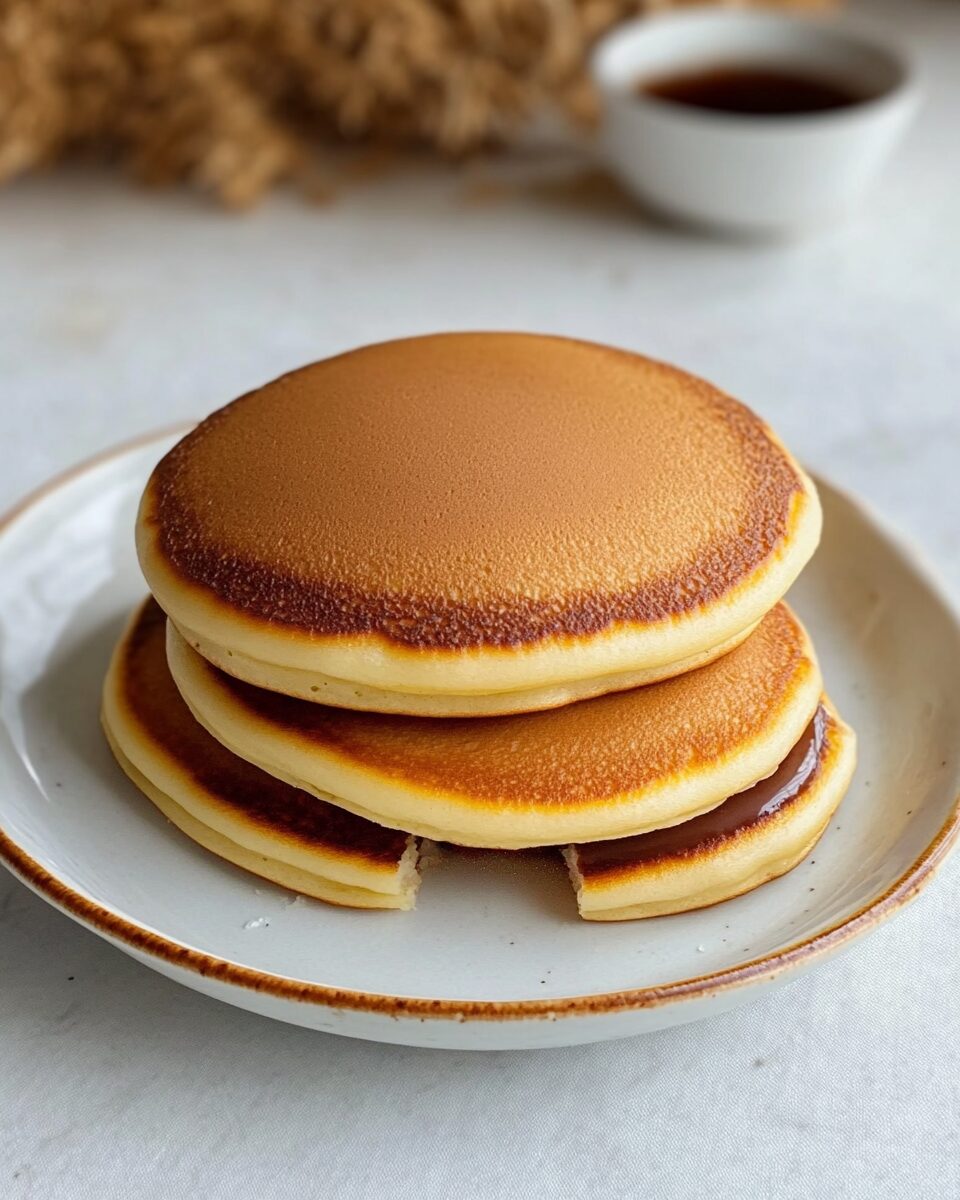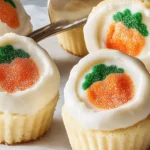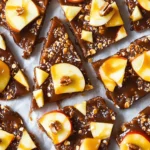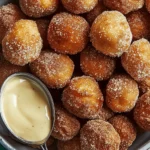A beloved Japanese sweet treat, Dorayaki consists of two fluffy, honey-scented pancakes filled with a rich, sweet red bean paste. These pancake sandwiches are soft, light, and perfect for dessert or a snack, offering a delightful balance of sweetness and texture.
FULL RECIPE
Ingredients
- 2 large eggs
- ¼ cup granulated sugar
- 1 tablespoon honey
- ¾ cup all-purpose flour
- ½ teaspoon baking powder
- 2 tablespoons water
- ¾ cup sweet red bean paste (anko)
- Neutral oil (for greasing the pan)
Directions
- In a mixing bowl, whisk the eggs until smooth. Add sugar and honey, and whisk until slightly thickened.
- Sift in the flour and baking powder, then mix until combined without overmixing.
- Add the water gradually until the batter reaches a thick but pourable consistency. Let the batter rest for 10–15 minutes.
- Heat a nonstick skillet over low heat and lightly grease it with oil. Wipe off excess oil with a paper towel.
- Pour small rounds of batter (about 3 inches wide) onto the skillet. Cook for 1–2 minutes or until bubbles form and the edges look set.
- Flip and cook the other side for another 30–60 seconds until golden. Remove and let cool.
- Spread red bean paste on one pancake and top with another to form a sandwich. Gently press together.
- Repeat with remaining pancakes and filling.
Nutritional Information
- Calories: 180
- Protein: 4g
- Carbohydrates: 34g
- Sugars: 18g
- Fat: 3g
- Fiber: 1g
History of Dorayaki
Dorayaki has a rich cultural history in Japan and is closely tied to traditional Japanese confectionery, or wagashi. Its origins date back to the early 20th century, although similar sweets were enjoyed even earlier. The modern two-pancake version became popular after a Tokyo-based shop started serving them in their current form. It has since become a common snack enjoyed by people of all ages across Japan and beyond.
Cultural Significance
Dorayaki is more than just a dessert—it’s part of Japanese tradition. It often appears in anime and folklore, most notably as the favorite food of the beloved character Doraemon. The treat represents comfort, nostalgia, and the simplicity of home-cooked Japanese sweets, often associated with childhood and seasonal festivals.
Texture and Flavor Profile
The appeal of dorayaki lies in its texture and balance of flavors. The pancakes are fluffy, soft, and slightly chewy, with a subtle sweetness enhanced by honey. The filling, traditionally a smooth or chunky sweet red bean paste, provides a dense, earthy contrast. Together, they create a harmony that’s both comforting and satisfying.
Modern Variations
While the classic dorayaki features red bean paste, modern interpretations offer a variety of fillings to cater to broader tastes. Popular alternatives include chocolate spread, custard cream, matcha-flavored fillings, whipped cream with fruit, and even savory versions. These adaptations have made dorayaki more accessible to global audiences.
Popularity Outside Japan
Dorayaki has gained international popularity thanks to the global spread of Japanese cuisine. Bakeries, cafes, and Asian supermarkets in many countries now carry dorayaki, either in its traditional form or with modern twists. Its compact size and appealing flavor make it an attractive sweet treat for all ages.
Best Time to Enjoy Dorayaki
Dorayaki can be enjoyed any time of the day—morning, noon, or night. It’s perfect as an afternoon snack, a light dessert after dinner, or even as part of a bento box. In Japan, it’s commonly enjoyed with a cup of green tea, which complements its sweetness beautifully.
Pairing Suggestions
Traditional tea pairings work well with dorayaki. Matcha or sencha green tea balances the sweetness of the red bean paste. For those seeking modern twists, dorayaki also pairs nicely with milk, coffee, or even ice cream. When filled with non-traditional ingredients, the beverage pairing can be adjusted accordingly.
Nutritional Value
Though considered a dessert, dorayaki offers a modest nutritional profile. The eggs and red bean paste contribute protein, while the beans offer some dietary fiber. However, it is high in carbohydrates and sugars, so it should be consumed in moderation as part of a balanced diet.
Storage and Shelf Life
Fresh dorayaki is best enjoyed within a day or two, but it can be stored in an airtight container at room temperature for up to three days. For longer storage, it can be refrigerated for up to a week or frozen for a month. When frozen, allow it to come to room temperature naturally before serving.
Reheating Tips
If you prefer your dorayaki warm, reheating it gently is key. Microwave on low for 10–15 seconds to soften the pancakes without drying them out. This can help restore some of the original fluffy texture and make the filling more aromatic.
Homemade vs Store-Bought
While store-bought dorayaki is widely available, homemade versions are often softer and fresher. Making dorayaki from scratch allows for customization in terms of sweetness, pancake thickness, and fillings. Homemade dorayaki also avoids preservatives and can cater to specific dietary preferences.
Tools You’ll Need
Preparing dorayaki at home requires basic kitchen tools. A nonstick skillet or griddle, a mixing bowl, a whisk, and a spoon or ladle for pouring batter are essential. A silicone spatula is also helpful for flipping the delicate pancakes without tearing them.
Troubleshooting Common Issues
If your pancakes are too flat, it may be due to overmixing or insufficient leavening. If they burn quickly, your pan may be too hot. Uneven cooking can result from not allowing the batter to rest. Letting the batter sit for 10–15 minutes before cooking helps achieve a more uniform texture.
Vegan and Gluten-Free Adaptations
Dorayaki can be made vegan by substituting eggs with flaxseed meal or commercial egg replacers and using plant-based milk. For a gluten-free version, a blend of rice flour or gluten-free all-purpose flour can replace wheat flour. Ensure any additional ingredients are also free from animal products and gluten.
Incorporating Seasonal Flavors
Dorayaki can be enhanced with seasonal ingredients like chestnuts in the fall or sakura (cherry blossom) flavoring in spring. These additions not only diversify the flavor but also connect the dessert to seasonal festivals and celebrations in Japanese culture.
Serving for Special Occasions
Dorayaki can be presented elegantly for special occasions by wrapping them individually in decorative paper or packaging. Adding a sprinkle of powdered sugar or garnishing with edible flowers can elevate the visual appeal for parties, tea ceremonies, or gifting.
Kids and Family Appeal
Children love dorayaki for its sweetness and soft texture. It’s a fun treat to make as a family activity, allowing kids to help with mixing, pouring, and assembling the pancake sandwiches. Choosing different fillings also makes the process creative and interactive.
Dorayaki in Japanese Media
The treat has a prominent place in Japanese pop culture, especially in anime and manga. Characters eating dorayaki often evoke warmth, nostalgia, and simplicity. Doraemon, in particular, has contributed greatly to its iconic status, making it recognizable worldwide.
Economic and Small Business Opportunities
Selling homemade dorayaki can be a viable small business venture, particularly in areas with interest in Japanese cuisine. Offering unique flavor combinations and catering to dietary restrictions can create a niche market. Packaging and presentation also play a key role in standing out.
Conclusion
Dorayaki is a versatile and delightful treat that bridges tradition and innovation. Whether enjoyed in its classic form or reinvented with new flavors, it maintains its position as a beloved confection in Japanese culture and beyond. Its simplicity, charm, and satisfying taste continue to make it a favorite among dessert lovers globally. With its increasing popularity, dorayaki is likely to keep evolving while staying rooted in the tradition that made it iconic.






